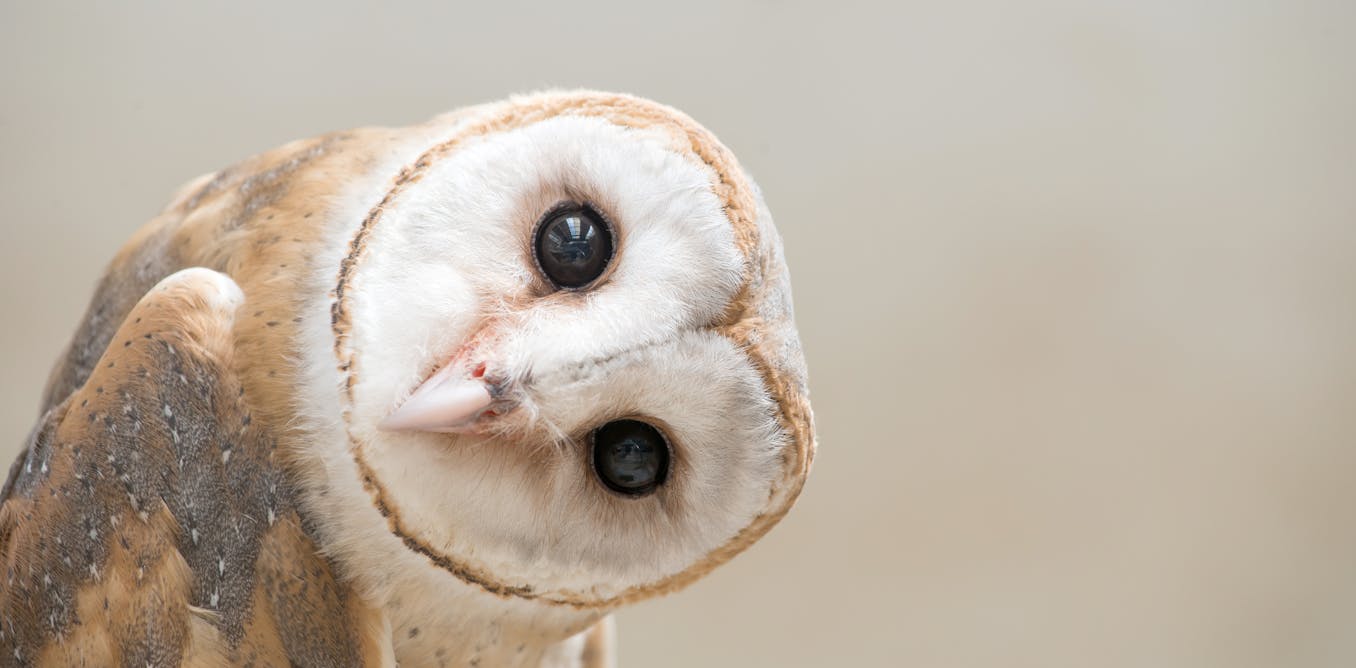
Do owls have bogies?
Ravine, aged three, Glasgow
Hi Ravine,
The quick answer is yes, but the interesting thing is why.
Bogies, or boogers as they are known in some countries, are made from nasal mucus – you probably call this snot. Snot is produced by your nose and is really important as it helps to trap dirt, germs and other nasty things. This stops these nasty things from going into your body, causing damage and making you ill. Snot also has antibodies in it – special white blood cells that help your body to fight infections. So, snot is super useful for protecting our bodies.
Curious Kids is a series by The Conversation that gives children the chance to have their questions about the world answered by experts. If you have a question you’d like an expert to answer, send it to [email protected] and make sure you include the asker’s first name, age and town or city. We won’t be able to answer every question, but we’ll do our very best.
Snot is also vital to help us to smell things. The mucus traps tiny scent particles that are then transported to special smell receptors in the nose. These allow us to identify different odours like food, which is especially important to help wild animals survive.
Some animals have an amazing sense of smell, much better than ours. Elephants use theirs to sniff out food and water, detect predators, and even recognise their family. But, when animals have a cold, a lot more snot is produced, and this interrupts the ability to smell things properly.
Bogies are just dried snot that collects in nostrils.
Which animals make snot?
All organisms need to protect themselves, and all have a sense of smell. So, all have some sort of snot. Some animals have huge noses and nostrils, so produce loads of snot – these include cows, horses and rhinos. Some animals have a limited sense of smell – animals such as dolphins and snakes taste smells rather than sniff them.
Some animals even include snot in their diets. The vampire squid feeds on marine snow in the oceans. This is made of snot but also poo and dead things. The vampire squid gathers up the falling bits of snot, then once it has collected enough, it eats it.
The marine iguana is one of the sneeziest animals. They produce lots of snot to help them get rid of the large amount of salt they eat from their favourite food, seaweed.

MDay Photography/Shutterstock
Bird bogies
Animals that rely on their sense of smell produce more mucus – dogs are expert sniffers and are known for having a wet nose. But most birds don’t have a very good sense of smell. This is because they get most information that they need to survive from other senses such as sight and hearing.
As most owls hunt their prey at night, they tend to rely on their amazing sense of hearing rather than their other senses. This means that they don’t use their sense of smell as much as many other animals. So they don’t need to produce loads of snot, but they still make some, and they still have bogies. Their poor sense of smell might explain why I, and my friends who do conservation studies on owls, have never seen an owl with a bogie. We’re going to look more closely now, though!
There are some bird species that rely on a good sense of smell. Kiwis are flightless birds that live in New Zealand. They have long, thin beaks and an excellent sense of smell, and can sniff out earthworms in the soil.

kosala000000/Shutterstock
Turkey vultures are also known for their amazing sense of smell. They can smell food such as carcasses from miles away, finding rotting flesh underneath leaves just as quickly as flesh that is out in the open.
Some seabirds use their noses to produce a map of smells to recognise where they are. This is useful on long migratory journeys across the open ocean where there are no features to help them to navigate.
Like the sneezy marine iguanas, seabirds need to get rid of the salt that builds up in their bodies from the seawater they drink and the salty prey they eat. These birds often look like they have a constantly runny nose, with mucus dripping from their nostrils. But the mucus actually comes from salt glands near their eyes.
All of these birds produce lots of snot to help them to smell.
Which animals pick their bogies?
Scientists found that over 90% of people admit to picking their nose. Teenagers seem to pick their nose an average of four times a day – gross!
Nose picking also happens in primates such as gorillas, chimpanzees and lemurs. Recently, an aye-aye – a creepy-looking animal with a super long middle finger – was filmed picking its nose and eating the bogies.

Harsha_Madusanka/Shutterstock
Only animals with fingers can really pick their bogies. Nobody is quite sure why animals pick bogies, but it might be because when snot dries it can sometimes be uncomfortable and block our noses, so picking is done to help us breathe more easily.
![]()
Louise Gentle works for Nottingham Trent University.



